Historically Speaking







We recently completed our last event of the 2021-2022 fiscal year, and I could not help but think back on everything the Historic Columbia team was able to accomplish in what felt like the blink of an eye.
During last year’s annual meeting, one of the many highlights for me was proudly sharing Historic Columbia’s newly adopted purpose statement. This statement, which was crafted with the support, input, and feedback of Historic Columbia staff members, volunteers, docents, board members, and community leaders over a years-long process, would later become the foundation and driving force for the future strategic direction of the organization.
Historic Columbia’s ultimate “why” was clearly communicated in this purpose statement and simply put:
Historic Columbia’s purpose is to preserve places and share complex stories from the past that connect us in the present and inspire our future.
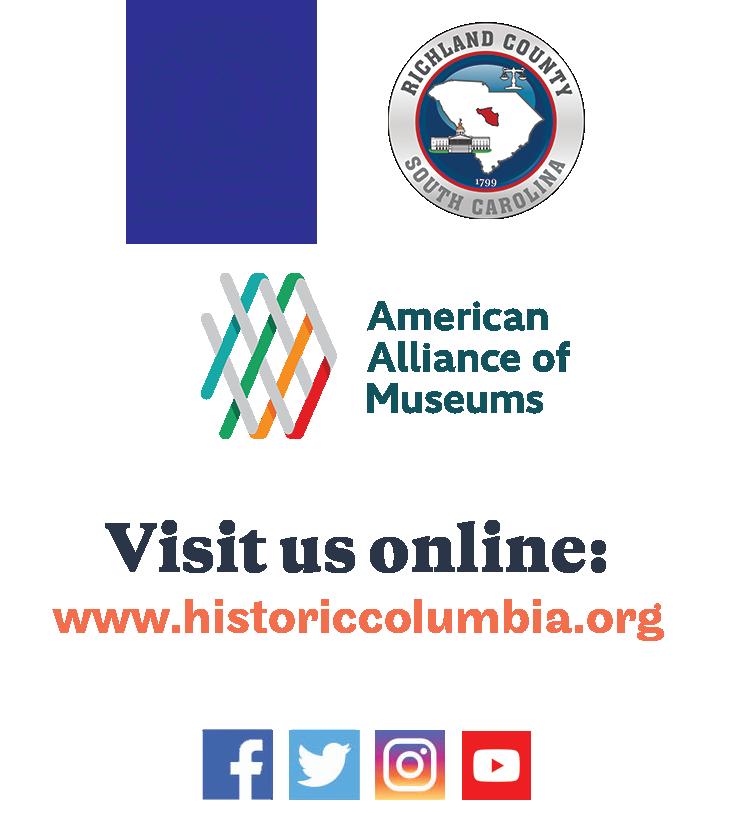
 Crafton President, Historic Columbia Board of Trustees
Crafton President, Historic Columbia Board of Trustees
In February, we kicked off the commemoration of Historic Columbia’s 60th anniversary by kicking up our heels with donors, staff, members, volunteers, board members, elected officials, and community leaders at the “Party of the Decade.” Over 600 attendees gathered at HamptonPreston Mansion to not only honor and recognize Historic Columbia’s birthday but to celebrate the completion of the Boyd Foundation Horticultural Center.
That same weekend, over 400 Historic Columbia supporters and tourists visiting Columbia, South Carolina enjoyed tours of the greenhouse, historic home, and gardens during the continued weekend celebration event, Community Day. All programs were free and open to the public that day and led by outstanding Historic Columbia team members.
As one more point to note, I’m pleased to share another milestone met and exceeded this year. In May, the Board of Trustees completed and adopted Historic Columbia’s 2022 - 2025 strategic plan. This proactive and ambitious plan focuses on community engagement, connectivity, partnerships, and sustainable growth. Within this plan, an emphasis was placed on ensuring that diversity, equity, and inclusion was at the heart of every initiative, program, member outreach, partnership, and house tour hosted by Historic Columbia.
For Historic Columbia, it’s not just saying it, it’s intentionally living it out.

Last but not least, I think back on my first of two years serving as the first Black president of the Board of Trustees. I’m proud to hold this seat, but even more proud of the impactful and important work Historic Columbia is doing to ensure diversity, equity, and inclusion is woven into the fabric of everything in which the organization engages.
If you haven’t had an opportunity to join Historic Columbia at an event yet, I invite you to come and experience this organization’s reach first hand.
I look forward to another year of engaging programming and noteworthy efforts that continue to bring this wonderful community our community together.
Kim Crafton, President
Mark Jones, 1st Vice President
Mike Adams, 2nd Vice President
Rodrick Shiver, Treasurer
Jeff Payne, Secretary
Gina Lesslie, Past President C.D.
Alex Guzman, Chair HCAC
Patrick Cleary, Chair Palladium
Alex Guzman, Chair
David Bornemann
Janice Bowman
Frank Braddock
Susan Brill
Anne Bristow
Jim Byrum
Ann Cameron
David Campbell
Frank Cason
Kenneth L. Childs
Debbie Cohn Beryl Dakers
Jim Daniel
Fred Delk
Lauren Dillon
Kate Dixon
Mary Elam
Lura Folline
April Hames
Carroll Heyward Dawn Mills-Campbell
Donna Polk
Doug Quackenbush Gwen Thurmond
Jessica I. Elfenbein
Lindsey Griffin Monya Havekost
David G. Hodges
Kathy Hogan Ann Holtschlag
Michelle Hurley-Johnson
Gloria S. James
Brian P. Johnston
Jamie Keller
Richard Linden
Andrew R. Lucas
Betsy McDonald
Robin Waites, Executive Director
Katharine Allen, Director of Research & Interpretation
Heather Bacon-Rogers, Tour Coordinator
Margaret Bauknight, Development Coordinator
Emily Brown, Marketing & Communications Manager
Daisha Calhoun, Rentals Coordinator
Stella Cobb, Visitor Experience Associate
Emily Folk, Visitor Engagement Associate
Eric Friendly, Research Coordinator
Fielding Freed, Director of Visitor Experience
Todd Miller
Stuart Moore
Kathy Norton Lorin Palmer
Debbie Parker C.D. Rhodes
Henry Roe Jenna Stephens
Holly Suggs Cleve Walker J. Calhoun Watson Aaron West Mozella White Toni Wilson
Patrick Cleary, President
Lauren Elliott, Vice President
Janie Campbell, Secretary Parrish Behles
Carter Davis
Jordan Heavner
Rebecca Hartner
Abi Snyder
Brad Shell Hardy Childers
Bailey Dunlap
Kip Dillihay
Jessica Raper
Mary Kate Korpita
Caroline Jackson
Megan Pinckney
Grace Salter, Ex-Officio
Historic Columbia’s Statement of Activities for the year ending on June 30, 2022.
Operating Income
City of Columbia .................................... 650,000 Richland County ..................................... 416,810
Individual/Corporate Donations ......... 469,810 Grants ......................................................... 53,537 Assets Released from Restriction ........... 74,600 Rental ....................................................... 119,371
Tours/Public Programs ............................ 65,986 Other ...........................................................96,651
Debbie Giles, Business Manager
Joe Glenn, Facilities Assistant
Kevin Jennings, Director of Buildings
Chris Mathis, Landscape Technician
Wallace McBride, Marketing Coordinator
Keith Mearns, Director of Grounds
Jeffrey Richardson, Director of Operations
David Ruff, Groundskeeper
John Sherrer, Director of Preservation
Rebecca Townsend, Horticulturist
David Turner, Director of Development
Total Operating Income ......................1,983,322
Operating Expenses
Program Expenses .............................. 1,614,069 General Supporting ................................ 207,028 Fund-Raising Expense ..........................175,7113
Total Operating Expense .................... 1,996,810
Non-Operating ..................................... 472,349
Net Operating .......................................... -13,488
Increase in Unrestricted Net Assets ..... 458,861
Increase in Donor Restricted Net Assets ................................................. 233,313
Increase in Net Assets ............................ 692,174
Net Assets, beginning of year ......... 3,303,832
Net Assets, end of year ..................... 3,996,006
Historic Columbia received reaccreditation by the American Alliance of Museums (AAM) at the June 2022 Accreditation Commission, the only organization representing the entire scope of America’s museum community.
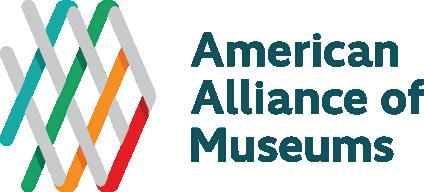
Historic Columbia proved itself to be a good steward of its resources held in the public trust and committed to a philosophy of continual institutional growth. We are proud to be a committed community steward and will use this honor to continue sharing the complex stories of our area.
Through a rigorous process of self-
The public gave to Historic Columbia in record numbers during the Central Carolina Community Foundation’s Midlands Gives event in May. A total of $58,142 was collected from 406 donors and $2,000 in total prizes from the Truist Milestone Award and Dominion Energy Fundraising Page Powerhouse Prize.

The theme for this year’s event was “A World Without Historic Columbia,” a parody of The Twilight Zone that illustrated how downtown Columbia might look had the non-profit not stepped in to preserve properties through the last 60 years.
Historic Columbia was founded to save the Robert Mills House in 1961, then Ainsley Hall House, from demolition. Now, we are the steward of six historic sites and advocate for saving places throughout the city and county.
assessment and review by our peers, Historic Columbia demonstrated that it has met standards and best practices and is an educational entity that is an appropriate steward of the collections and resources it holds in the public trust.
Of the nation’s estimated 33,000 museums,
only 1,096 are currently accredited, according to the American Alliance of Museums.
Recognized as the field’s gold standard for museum excellence for 50 years, AAM accreditation signifies a museum’s quality and credibility to the entire museum community, to governments and outside agencies, and to the museum-going public.
The accreditation program helps to ensure the integrity and accessibility of museum collections, reinforce the educational and public service roles of museums, and promote good governance practices and ethical behavior.
Historic Columbia is incredibly grateful for the members who’ve sustained our organization during the past few years of the pandemic. This year, we’ve been thrilled to gather in person again and welcome both new and familiar faces to events and programs. As much as we love our historic properties, it’s wonderful to see the people who fill them, experiencing all Historic
Columbia has to offer.
Membership numbers have been steadily increasing, which is thanks to our wonderful supporters who see value in being part of our mission. We have designed programs, tours, and events to appeal to more diverse, eclectic, and informed audiences, and we continue to challenge ourselves to keep history relevant to all.
You have helped us grow tremendously over the years and expand our offerings beyond the










six historic properties and 14 acres of green space we manage. Because of your support, we provide tours and programs to more than 40,000 residents and visitors annually and tirelessly advocate for the preservation of our historically significant sites and of our cultural heritage. Thank you to all members for your support as we work to preserve places and share complex stories from the past that connect us in the present and inspire our future. We look forward to continued growth in FY23 and beyond!

The construction of a glass house at the Hampton-Preston site has been a dream of Historic Columbia’s board, staff, and garden committees since the adoption of the Cultural Landscape Master Plan in 2006. Thanks to the Darnall W. and Susan F. Boyd Foundation, that dream became a reality in March.

Using the most probable design of the original glasshouse on the site, the Boyd Horticultural Center provides tangible links to the history of the property in the 1850s. It also features a three-quarter span glasshouse running the entire length of the structure and includes a production greenhouse, a central orientation lobby, and an interpretive greenhouse.
“Susan Boyd is an avid gardener,” said Boyd Foundation president George Bailey. “And because we want to provide recreational opportunities for people in Columbia and our visitors, the greenhouse will help the gardening efforts at Historic Columbia immensely.”
“The installation of a historically inspired greenhouse at Hampton-Preston will bring
to bear what we thought was a pipe dream at Historic Columbia,” said Robin Waites, Historic Columbia’s Executive Director. “Not only will the new structure support a greatly expanded propagation program, but the spaces will allow us to enhance our garden-specific interpretive and programmatic activities.”
The working greenhouse and nursery allow the grounds team to propagate plants that are historically connected to Hampton-Preston and other Historic Columbia-managed sites. The team can not only use these plant materials in the gardens, but can serve as a resource for other historic gardens, as well as the general public. In addition, the greenhouse can be a space for the community to participate in and host garden workshops, meetings, and special events.

By allowing Historic Columbia to expand its own propagation efforts, the catalog of plants available at its two plant sales each year will be gradually expanded to offer everything grown on site to the public.
“We will be (offering) plants that you can’t
find here in Columbia, that you would have to go to specialty nurseries and things like that to find,” Keith Mearns, Historic Columbia’s Director of Grounds, revealed on an episode of Walter Edgar’s Journal in August. “We will be doing everything we can to bring rare and otherwise interesting plants to the public.”
Continued from P6
“Scheduled tours of Historic Columbia’s properties run throughout the week, but you don’t need to buy a ticket to enjoy its gardens,” said John Sherrer, Director of Preservation for Historic Columbia.

“You can go through the front gate, you can go through the pedestrian gate … still others like to come down the sidewalk on Laurel Street and come through the rear gates because they’re so captivated by the Boyd Horticultural Center Greenhouse,” Sherrer said. “It’s really amplified access to the property where, about a year ago, you could only access the property through the front gates.”
In addition to the greenhouse construction, the Boyd Foundation funded the construction of a gatehouse to create a Pickens Street entrance.
“This structure is a replication of the summer house the Hamptons originally had to mark the public entrance to the gardens so that folks could enjoy the gardens without bothering
n The gardens at the Hampton-Preston site are curated with the target period of 1840-1860, which represented the height of wealth of the Hamptons and Prestons.
n The design of the garden is French/Italianate, which, at the time, was already considered an “old” style. Apparently, the family favored this older style with its emphasis on meandering walks, exotic specimens, and spatial intimacy.
their family,” Bailey said. “It is an eye-catching, historically accurate addition to the HamptonPreston Mansion and Gardens.”
The gardens were once nationally recognized and made available for the public to enjoy, even as the Hampton family made its home there in the mid-1800s. Historic Columbia has recreated the gardens by using heirloom, historicallyaccurate plantings to provide a public space for today’s residents of Columbia.
During their time at the urban estate the property became renowned for its extensive native and exotic plantings that filled most of
the four-acre tract on which the main house still stands today. However, other key elements in achieving that horticultural distinction—a combination of free, white and enslaved people of color and the support buildings in which they toiled—remain in written descriptions and visual references.
The Darnall W. and Susan F. Boyd Foundation previously partnered with Historic Columbia on projects at Hampton-Preston Mansion and Gardens and the Robert Mills House. The Boyd Foundation’s latest project was completing the restoration of the gardens at Hampton-Preston.
Near the end of October 2021, Historic Columbia – in partnership with South Caroliniana Library and the University of South Carolina’s Department of Oral History – launched the LGBTQ Columbia History Initiative, an interactive website that serves as a public portal to more than 30 oral histories, an interactive map, and more.
The initiative amplifies the history of an overlooked – and exceptionally diverse – segment of Columbia’s community, a history that is rarely documented in mainstream historical archives.
“The only way to understand what it might have been like is to hear people’s own recollections,” said Katharine Allen, Director of Research & Interpretation for Historic Columbia. “We interviewed not just people who are the elders of the community – although we made sure to prioritize them – but also captured the voices of younger people. Their experiences are very, very different than people who are in their eighties.”
The interviews on the website were conducted and transcribed by Historic Columbia in 2020 and feature prior interviews conducted by Santi Thompson in 2007, a 70-box “South Carolina gay, lesbian, bisexual, transgender, and queer collection” held by South Caroliniana Library. The website features two longform stories: “Alone | Together: The Impact of AIDS” and “Each Individual’s Right to Be: A Gay History of the University of South Carolina,” which are bolstered with an interactive map showcasing more than 250 events, organizations, and businesses relevant to the LGBTQ community here in Columbia.
The interactive map highlights local histories for the AIDS crisis, arts and culture, churches and religious organizations, community violence against the LGBTQ community, and other related topics.
The website isn’t intended to be the final word on LGBTQ history in Columbia. The history initiative is just the tip of an iceberg when it comes to illuminating the complex stories behind the people, organizations, and events that continue to shape the LGBTQ community.
“People can take it as it is, as a resource to learn about gay life in Columbia,” Allen said. “But it’s also a roadmap for people that are in positions of power related to preservation, related to commemoration at places like
the University of South Carolina. And then also students, amateur historians, and people that know they want to tell a story but literally have no idea where to start. If someone’s doing research 30 or 40 years from now, they’re going to be able to see these moments and capture it correctly.
With this initiative, they’re not starting from scratch. They have these blurbs, they have the names, we have the oral histories, they have the places, like, they’re starting with so much more. And that was what we were hoping to be as a resource.”
Allen said the project represented about a year’s worth of labor “crammed into seven or eight months.” She and Eric Friendly, Research Coordinator for Historic Columbia, worked nights and weekends near the end of the project.
“We made sure to capture not just cisgender white men, which is traditionally the voice that people hear when you think about gay rights,” she said. “We also captured lesbians, transgender individuals, bisexuals, and then people who are African American, who are Latino, and of course, white, as well.”
These interviews offered a broad spectrum of experiences across both demographics and time, she said.
“What’s really interesting is that if you look through those oral histories, you can read about the same event or same experience and you will get three, four, or five different views and opinions about what happened,” she said. “There’s no one true ‘first’ Pride March story.”
Local LGBTQ culture was also more active and livelier than the records suggest, she said. Because newspapers, business licenses, and other written records rarely – if ever – labeled LGBTQ activities as such, researching them can be a challenge.
“What I love to share with people is that there were, historically, not three or four gay bars in Columbia at a time,” Allen said. “There were several times that amount. But they weren’t publicized in mainstream newspapers or in the city directory that way. So, you must have oral histories, you must have access to people who have been in Columbia since the 1950s and can just name the bar.
There were things that no one has ever written about or really talked about. The coolest thing that we have done is one of our interviewees was a co-producer of a show called Radio Rainbow that was on the air from 2005 until
Visit the LGBTQ Columbia History Initiative online at www.historiccolumbia.org/lgbtq-columbia

There were things that no one has ever written about or really talked about.Right: The collections held by the University of South Carolina include banners, masks, t-shirts, keychains, and a variety of buttons, like these. Ephemera provides a tangible link to past events and demonstrations by the local LGBTQ community. Images courtesy South Carolina Gay, Lesbian, Bisexual, Transgender, and Queer Collection, South Caroliniana Library, University of South Carolina, Columbia, S.C.

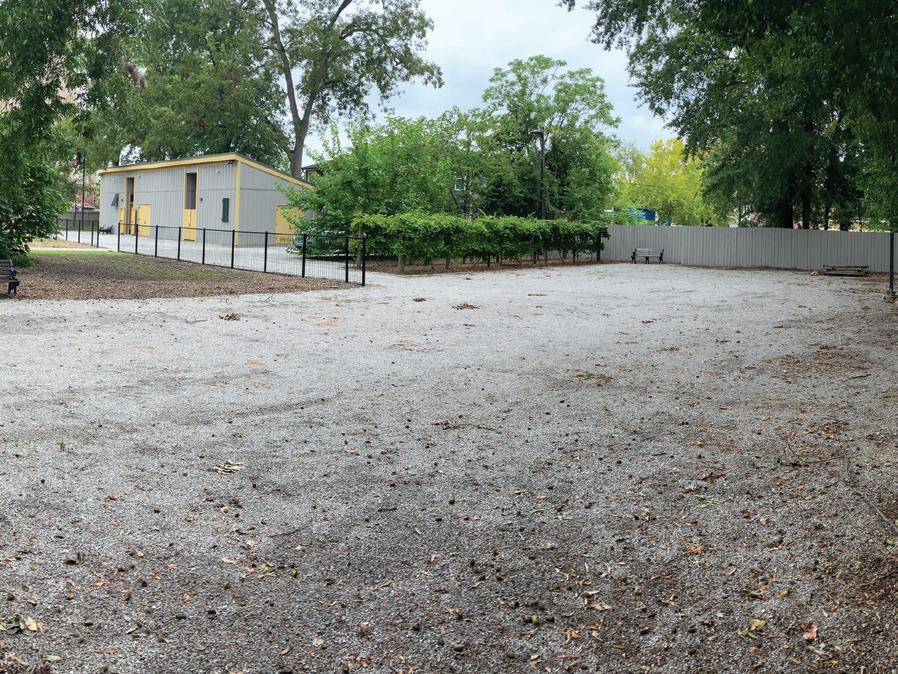
The renovation of the grounds at what is now known as the Museum of Reconstruction Era at the Woodrow Wilson Family Home is the focus of the 2022-23 Annual Fund. Each year, the Annual Fund supports a special and vital initiative of Historic Columbia.
Historic Columbia reopened the Woodrow Wilson Family Home in 2014 as the nation’s only museum dedicated to interpreting the postCivil War Reconstruction period. The renovation of the landscape that wraps around the historic home was included in this all-encompassing reimagining of the site.
The original gardens reportedly were designed under the influence of Jessie Wilson, the 28th president’s mother. Like other landscapes of the period, it was divided into the formal front yard and the working back yard. Little documentation of the property exists from the Wilson family’s ownership in the 1870s, but roses, tea olives, crepe myrtle, japonica, and other shrubs were likely planted in the front, decorative garden. The working garden would have featured vegetables for cooking and flower beds that were cut for decoration. The landscape renovation was inspired by its historic usage.
JESSIE WILSON
The changes to the interpretation of the home continue to foster dialogue around the importance of this pivotal period in history and the connection to current events; however, the renovation of the gardens has not met with the same success.
See RENOVATION , P11
Right: a landscape plan similar to what the Wilson family home might have looked like can be found in designer and landscape architect Andrew Jackson Downing’s 1942 publication Cottage Residences: Or, A Series of Designs for Rural Cottages and Cottage Villas, and Their Gardens and Grounds, Adapted to North America. Above, the existing lawn will be extended over the underutilized gravel lot.

Issues with the initial installation continue to limit the functionality of key interpretive features, and the decline in some of the oldest plant materials is driving the decision to make some substantial changes to the space.
In 2006, when Historic Columbia began to address the 14 acres of landscapes across the six sites that it manages as part of the Cultural Landscape Master Plan, it acknowledged the impermanence of gardens.
Since adopting the overarching plan, Historic Columbia’s commitment has been to ensure that it has the capacity not just to install new gardens but to maintain them. To
that end, Historic Columbia’s Grounds Team developed a plan for the gardens at the Wilson site that will enable it to interpret the historic space more effectively through the following changes:

n the naturalistic lawn and shrub plantings will be extended along the northeast side of the property in place of the large gravel lot, n site drainage will be installed to mitigate washouts and standing water, n upgrades will be made to the existing irrigation system to better meet the needs of the well-planted pleasure garden, n the beds in the work yard will be upgraded with high-quality topsoil capable of sustaining flower and vegetable beds, and
n new signage and an audio tour will provide additional content for visitors to the site.
These changes will immediately make the grounds of the Museum of the Reconstruction Era more attractive and usable. Over time, as new plantings mature, the gardens will develop into the ideal picture of a Victorian suburban property, the beauty of which will allow Historic Columbia to delve further into the complex story of its past.
Support for the Annual Fund is key as gifts of all sizes help Historic Columbia achieve its goal of preservation, education, and advocacy. Through your generosity, an updated landscape will be created that connects the past with the present in hopes of inspiring our shared future.
Historic Columbia is a non-profit organization working to preserve and protect the history of our region for generations to come. We are asking you – our longtime friends and supporters – to extend the legacy of the leaders who raised funds in 1961 to save the Robert Mills House from demolition. Gifts of all sizes help us achieve our goal of preservation, education, and advocacy. You can support the 2022-23 Annual Fund by submitting the enclosed envelope or donating at the link below. Thank you for investing in Columbia’s past, present, and future!
historiccolumbia.org/annualfund
A view of Main Street looking north from Greene Street. Taken during the 1970s, the top photo shows the Wade Hampton Hotel, which once stood across the street from the State House. The hotel was leveled by a controlled imposion in 1985. It had once been Columbia’s largest hotel, but during its final years had been used as a dormitory for the University of South Carolina. Image courtesy Russell Maxey Photograph Collection, Richland Library, Columbia, S.C.

6 — 7:30 p.m.
Gain an understanding of the renovation process and insights from those involved in this stunning transformation while also learning about the history of the building, its uses through the years, and the Governor’s Hill neighborhood. Enjoy light hors d’oeuvres as well as beer and wine at this fascinating tour. The address for the Renovation Rodeo will be emailed to all attendees on the Monday before the event. Make sure to register with your current email address. Palladium members get into Renovation Rodeo for FREE! HC members are $10 and Future Members are $15. If you are currently a Historic Columbia member and would like to add Palladium to your membership, contact Margaret Bauknight at mbauknight@historiccolumbia. org or 803-252-7742 x15.
2 — 3:30 p.m.
Historically a residential, light industrial, mercantile and transportation district, the Congaree Vista comprises almost 800 acres. Bounded by the Congaree River to the west and Assembly Street to the east, this portion of South Carolina’s downtown features a mixture of historically significant buildings with architecturally sympathetic re-development and infill projects. The product of considerable capital investment beginning in the 1970s, the Vista today features loft, apartment, and townhouse residences, restaurants and bars, specialty shops, and offices. Officially referred to as the West Gervais Street Historic District, the Congaree Vista is listed in the National Register of Historic Places and is protected as an architectural conservation district by the City of Columbia.
5 — 7 p.m.
Performers from the South Carolina Philharmonic will join Historic Columbia to present a beautiful concert of light classics in the garden at Seibels House. Please plan to arrive any time after 5 p.m. The concert will begin at 6 p.m. and last an hour. Bring your own blanket or chairs, and pack a picnic if you’d like. Tickets are required and space is limited. Please note that this event is for those 21 and over. Wine will be available to purchase for $5 per glass, but everyone can bring their own food and beverage. The Seibels House & Garden is located at 1601 Richland St.

Residents of Richland and Lexington counties are once again invited to tour one of Historic Columbia’s house museums for FREE on the third Sunday of the month thanks to Still Hopes! On November 20, visit The Museum of the Reconstruction Era, the nation’s only museum dedicated to interpreting the post-Civil War Reconstruction period and South Carolina’s only remaining presidential site. Self-guided tours are offered from 1-4 p.m. To begin the tour, meet at The Museum of the Reconstruction Era at 1705 Hampton St.


Answering the eternal back-to-school question was easy for the children who participated in Historic Columbia’s summer camp programs. From plant science to famous inventions, artistic creations to activism, kids spent their days learning, playing, and most importantly, having fun.


Throughout South Carolina, the Jewish community, enthusiastic genealogists, and history buffs alike are raving about the Jewish Merchant Project. Launched five years ago as a partnership between the Jewish Historical Society of South Carolina, Historic Columbia, and the College of Charleston, the project has grown to include short histories for more than 530 Jewish merchants and stores from dozens of municipalities across the state.

In the past year, Historic Columbia added more than 275 merchants to the site, including the iconic Columbia businesses of B. Berry’s, Berry’s on Main, Allan’s, and Mark’s Men’s Wear. In addition, we recorded an oral history with Tobie Drucker, a local merchant who owned clothing and shoe stores on Assembly Street and Farrow Road. As we continue to tell the story of Columbia’s Jewish community, we are excited to remain involved in this impactful project.

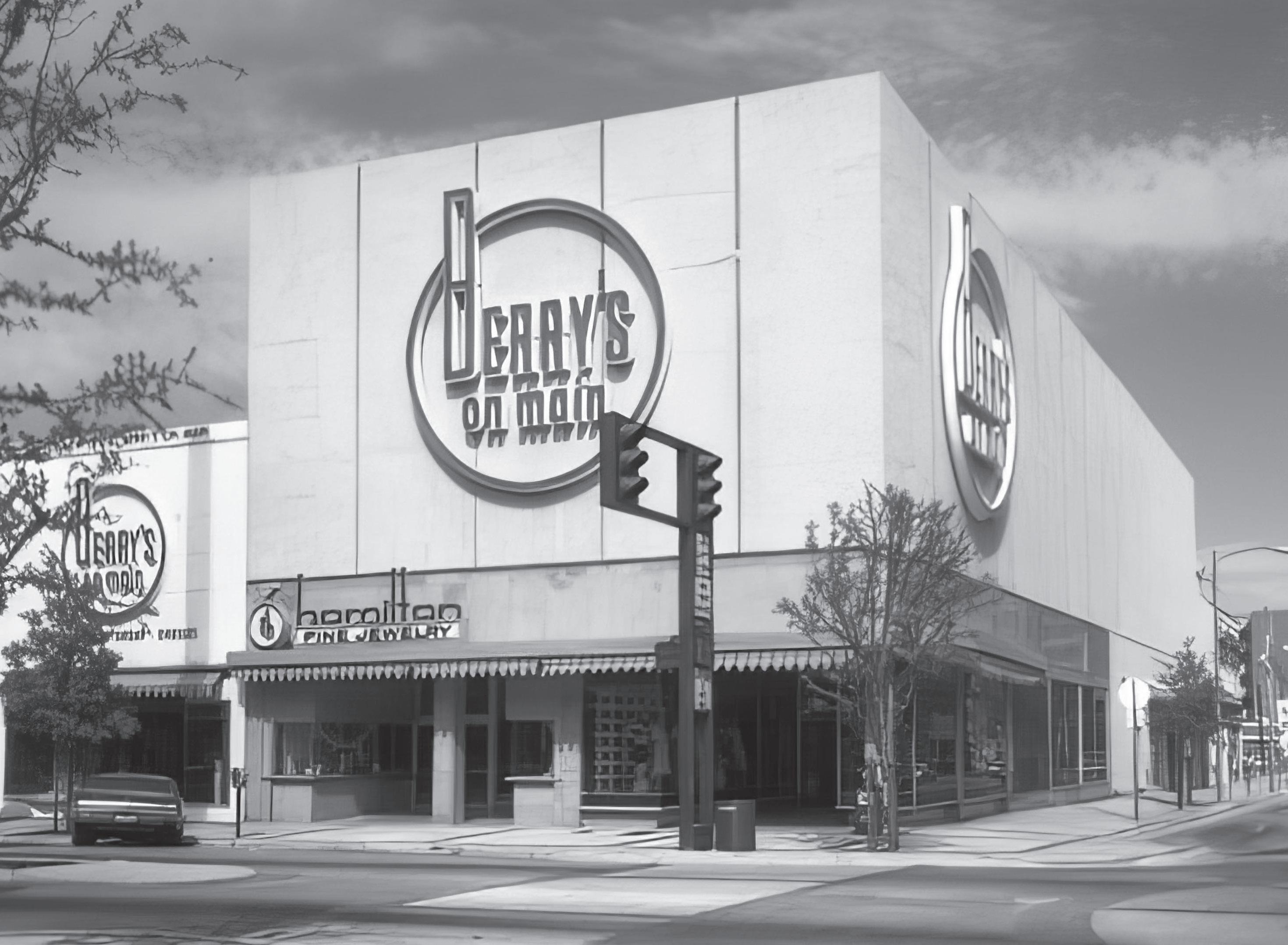
“I guess I was most proud of the fact that we (the South Carolina Gay and Lesbian Business Guild) welcomed people. We genuinely welcomed people. We provided a place where, when somebody walked in there was some board member sitting at the front that said, ‘Hey, glad to see you. Come on in.’”
“For a long time, I had an issue with accepting who I was. I don’t want to say an issue. I just didn’t know. Once I became of age to know exactly what sexuality was, what attraction was, I battled with that for a good year and a half. I think that just going through everything that I went through, I’ve seen me.”
“Well, I think there will always be a need for gay bars, simply because there are people who need that camaraderie. I think it will become less and less needed as society accepts what they’re going to have to accept about homosexuality, that we’re everywhere, we’re not going anywhere.”
“I remember making a fake Airport High ID just to go to the gay bar. I got in. They let me in. I’m sure they… I think somebody was like, ‘Oh, keep an eye on her.’ I never drank when I went there because I didn’t want them to get in trouble.”
UofSC’s
Continued from P8
2012.”
“Lip-syncing
The show launched in 2005 as a response to a proposed constitutional ban on gay marriage in South Carolina, she said. Activists mobilized to prevent the proposed ban, resulting in the creation of Radio Rainbow, a 30-minute news show covering LGBTQ issues. An interview or editorial aired in the second half of the show.
“It was received so well that six episodes turned into 400-something episodes,” Allen said. The shows were broadcast live, but episodes were also burned to compact discs and handed out.
“This co-producer (Bruce Converse) has all the CDs of the old episodes, which eventually went beyond interviewing people in Columbia or in South Carolina,” Allen said. “And all those episodes are saved. I worked with the interviewee and co-producer to get those officially donated to the University of South Carolina Department of Oral History. We’d love to see those be placed online so that people can hear all the old episodes, because there’s a lot of good research content there.”
Allen said the Radio Rainbow donation is just one example of how the initiative’s impact has already had a positive effect beyond its original scope.


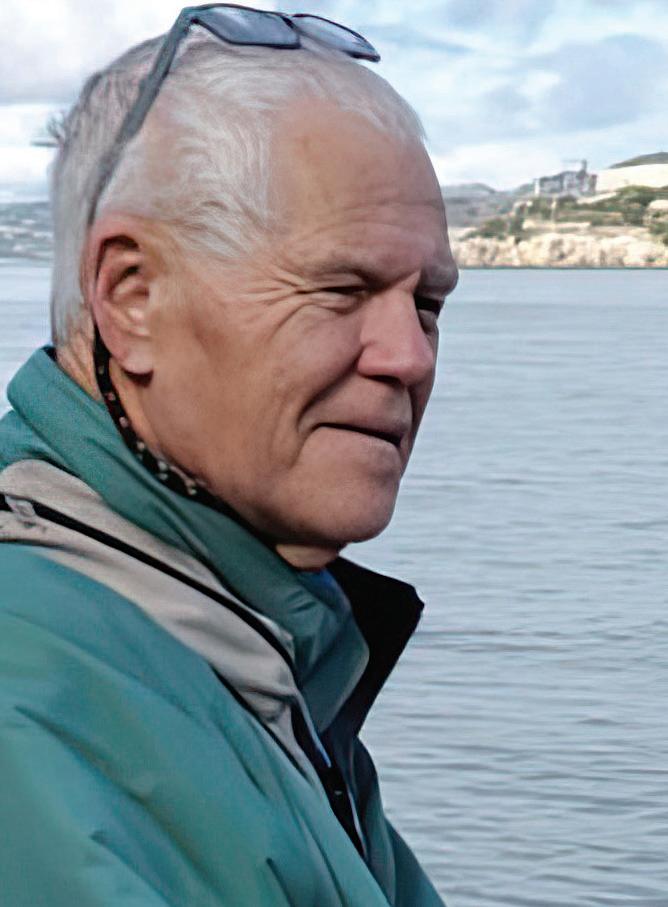


“There were a lot of really cool things that were donated to collections because of the work we’re doing,” she said. “People just didn’t know that anyone might have a use for some of this stuff. We had a lot of momentum, and I’m hoping to get that back. But we have to figure out what the next phase of funding is.”
To support Historic Columbia’s continued efforts to research and amplify these often untold stories, donate to the LGBTQ History Initiative at historiccolumbia.org/supportlgbtq-columbia.

During the mid-twentieth century, Eckerd’s Drug Store at 1530 Main Street was downtown’s one-stop-shop for more than just pharmaceutical products. There, Columbians could also buy footballs, cigars, and, most importantly, lunch. Like all lunch counters on Main Street during that time, however, Eckerd’s refused to serve Black customers. Inspired by the Greensboro sit-ins, Allen University students Simon Bouie and Talmadge Neal led a protest at Eckerd’s in 1960. After they refused to leave, police arrested them for trespassing, and they were subsequently convicted. This demonstration was part of a broad, local movement protesting racial segregation. In 1964, the US Supreme Court overturned their conviction in the well-known civil rights case Bouie v. Columbia
Postcard, c. 1940 Historic Columbia collection, 2021.3.1E
